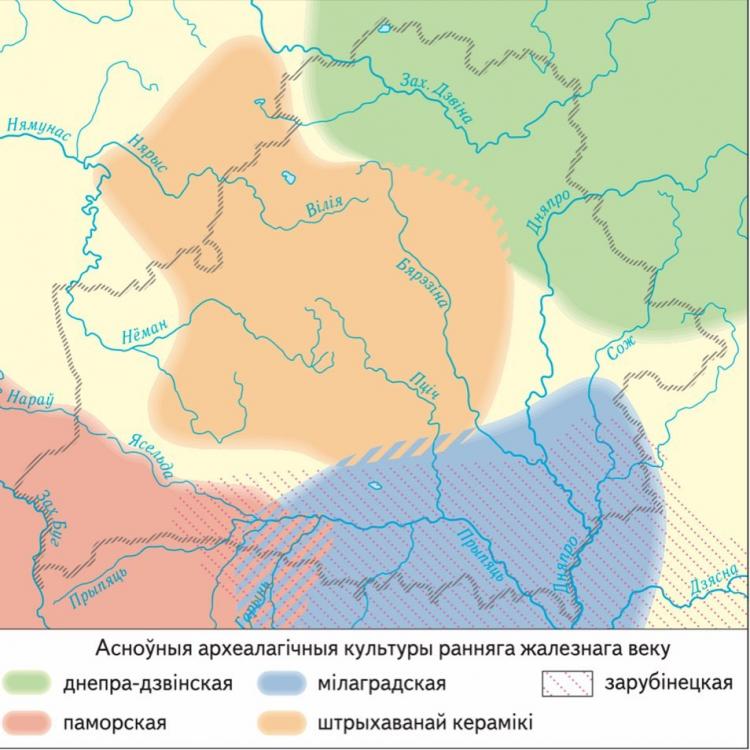-
Posts
2.399 -
Joined
-
Last visited
-
Days Won
82
Genava55 last won the day on December 14
Genava55 had the most liked content!
Recent Profile Visitors
Genava55's Achievements
-
.thumb.jpg.b21ca1d0c15fb56b42c39b25a0a40815.jpg)
The Gauls, religiously gore and gruesome
Genava55 replied to Genava55's topic in Tutorials, references and art help
Batilly-en-Gâtinais - Domaine aristocratique Gaulois du site des Pierrières en 3D.mp4 Reconstitution d’un ancien domaine aristocratique gaulois à Batilly-en-Gâtinais (Loiret), sur le site des Pierrières. -
.thumb.jpg.b21ca1d0c15fb56b42c39b25a0a40815.jpg)
Archaeological potpourri
Genava55 replied to Gurken Khan's topic in Introductions & Off-Topic Discussion
Not really, the dating of such structures is clearly falling in the Holocene. They are dating the underwater structures thanks to the dating of the environmental changes, notably a marine transgression in the case of Britanny. 1797401694_Fouquetetal_2025_IJNA.pdf It is not undermining the consideration we have for them. It is simply a description of their lifestyle. Using another label requires proving they are not hunter-gatherers. -
.thumb.jpg.b21ca1d0c15fb56b42c39b25a0a40815.jpg)
Archaeological potpourri
Genava55 replied to Gurken Khan's topic in Introductions & Off-Topic Discussion
I don't see why it should be unbelievable. It looks similar to the Blinkerwall structures in the Baltic Sea which was mostly used to trap animals. Also the idea that hunter-gatherers were unable to build massive structure should be revised. See the Carnac stones for example. -
.thumb.jpg.b21ca1d0c15fb56b42c39b25a0a40815.jpg)
Civ: Germans (Cimbri, Suebians, Goths)
Genava55 replied to wowgetoffyourcellphone's topic in Delenda Est
Map by Maptysk illustrating the various contributions from different material cultures to the formation of the Bastarnae (related to the Poienesti-Lucaseuca culture) -
-
Duileoga is working for a mod. Don't worry, there is little chance they would be integrated in the main game. The Chernoles culture disappeared a long time ago, around the 6th century BC. The Milograd culture existed in northern Ukraine and southern Belarus for several centuries. But it was replaced by the Zarubintsy culture, which represents a bit of a cultural break. There are elements of the Zarubintsy culture that originate from Germanic cultures. This culture of Zarubintsy appeared around 200 BC and existed up to the 1st century AD. After that, there is a transition period when the culture of Zarubintsy decays and a sharp reduction in the number of settlements. The Kiev culture is a reemergence of a Balto-Slavic culture which appeared around the 3rd century AD. The question of the Slavic origin is tied to how the Kiev culture appeared. If you want to portray the Venedi/Veneti, they are probably further in the North. Pliny and Ptolemy locate them near the Baltic sea region. So we can suppose the Venedi/Veneti were a confederation of different Balto-Slavic tribes. Generally, the Brushed Pottery culture, the Milograd culture and the Dnieper-Dvina culture are seen as a continuum of similar populations. So if you want to suppose the testimonies from Pliny, Tacitus and Ptolemy are also valid for a more ancient period, then you can suppose these cultures were related to the Venedi/Veneti. Like this you can use evidence from the Milograd culture, Dnieper-Dvina culture and Brushed pottery culture. And you can add Germanic mercenaries from the Przeworsk culture (Lugians) and from the Zarubintsy culture (probably the Scirii). You can also add Sarmatian and Scythian mercenaries.
-
.thumb.jpg.b21ca1d0c15fb56b42c39b25a0a40815.jpg)
Civ: Germans (Cimbri, Suebians, Goths)
Genava55 replied to wowgetoffyourcellphone's topic in Delenda Est
https://archaeology.org/news/2025/12/12/new-thoughts-on-denmarks-ancient-hjortspring-boat/ https://journals.plos.org/plosone/article?id=10.1371/journal.pone.0336965 -
It is difficult to know when the Slavs separated from the Balts. The Kiev culture is the only one that can be definitively attributed to the Proto-Slavs. Regarding earlier cultures, there is no certainty. There are many contradictory and contested hypotheses. There is no consensus concerning their relationship with the Proto-Slavs. The cultures most frequently discussed are the Milograd culture, the Dnieper-Dvina culture, the Zarubintsy culture, and the Chernoles culture. In my opinion, the Kiev culture derives mostly from Dnieper-Dvina (Днепро-Двинская культура). Green = Dnieper-Dvina Orange = Brushed pottery culture Red = Pommeranian culture Blue = Milograd culture Hatched and dashed lines = Zarubintsy culture The earliest mentions of the Baltic Venedi are from Pliny the Elder and Tacitus, both writing in the 1st century AD. Too old for your mod?
-
-
.thumb.jpg.b21ca1d0c15fb56b42c39b25a0a40815.jpg)
The Gauls, religiously gore and gruesome
Genava55 replied to Genava55's topic in Tutorials, references and art help
@Stan` c'est possible d'intégrer la vidéo ? -
.thumb.jpg.b21ca1d0c15fb56b42c39b25a0a40815.jpg)
The Gauls, religiously gore and gruesome
Genava55 replied to Genava55's topic in Tutorials, references and art help
Une très bonne conférence par Matthieu Poux qui présente les spécificités uniques aux Gallo-Romains et comment elles proviennent des anciennes traditions gauloises. Il y a tout une partie sur les sanctuaires et les temples, comparant les similitudes entre Gaulois et Gallo-Romains. -
.thumb.jpg.b21ca1d0c15fb56b42c39b25a0a40815.jpg)
There's an article talking about us
Genava55 replied to ribasvilanova's topic in Introductions & Off-Topic Discussion
It's good to see that people are noticing. Changing the image that people have of the past is important. -
Special abilities are indeed something lacking. Regardless of the direction the game takes in its design, having special abilities would be an asset in any case. And it's something that's realistic to implement.
-
That's exactly my point. Total War has its own features, its own mechanics. Code-wise, it is very different from Age of Empires and other RTS. You are giving the example of BFME2, which is both very different from Total War and very different from 0 A.D. in its mechanics. Implementing charging bonus, morale, fatigue, ammo etc. do not require battle formations. It is actually the battle formations which require new features to make sense. All the mechanics in battle should make sense with the formations. It requires a holistic approach. The challenge is to produce a well rounded design and balanced mechanics based on battle formations. While keeping the other features and design of 0 A.D., notably on the economy. And also making all that with the current engine, notably the pathfinding. This is a major overhaul. Total War and BFME2 were designed with this idea from the start, don't underestimate the ramifications. It would be great but I don't see how it is feasible with the current ressources and management.
-
What is the point of formations? Or more precisely, what are the motivations behind this wish? It seems to me that the motivations are mostly cosmetic. To give a total war vibe.













